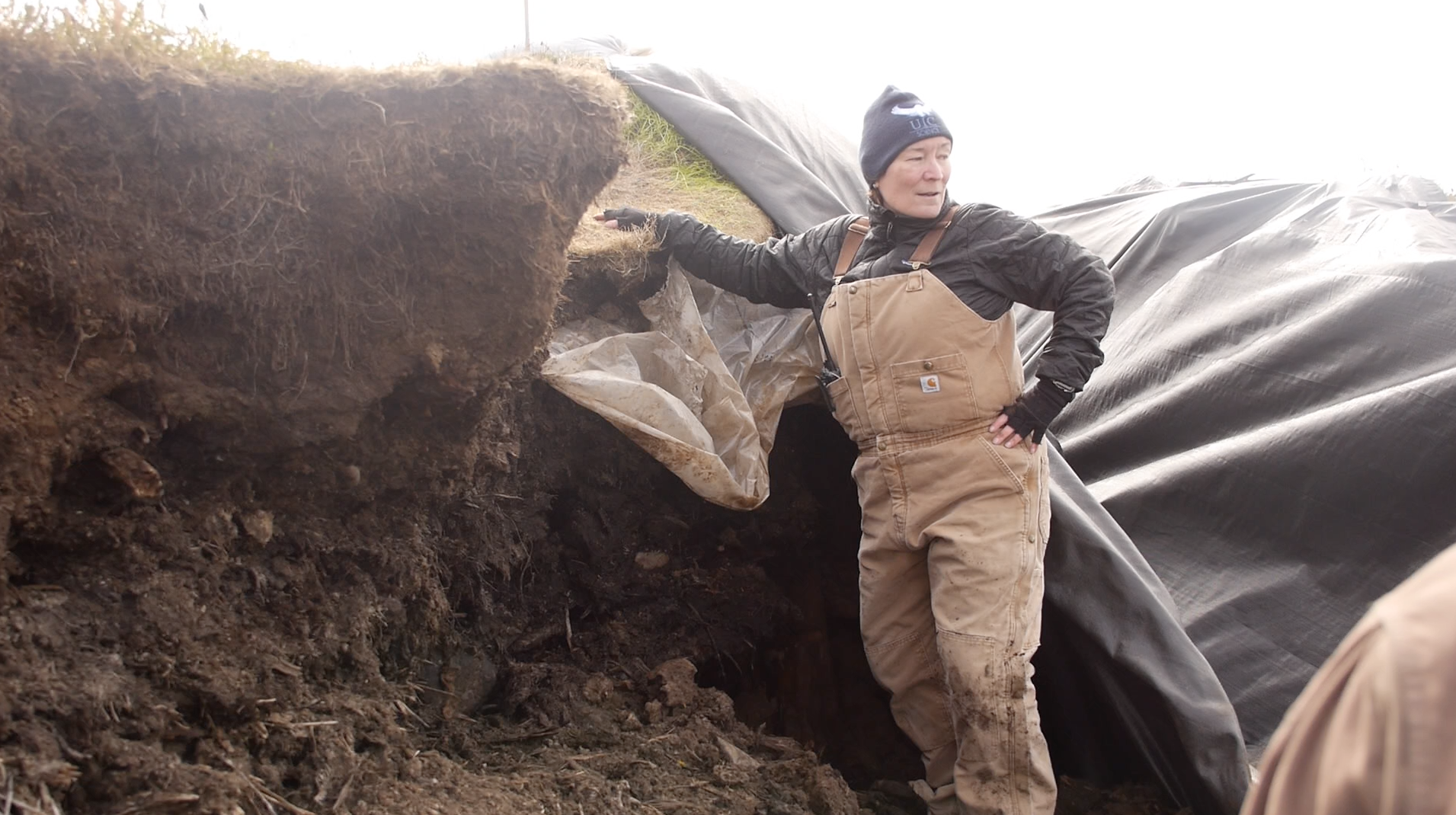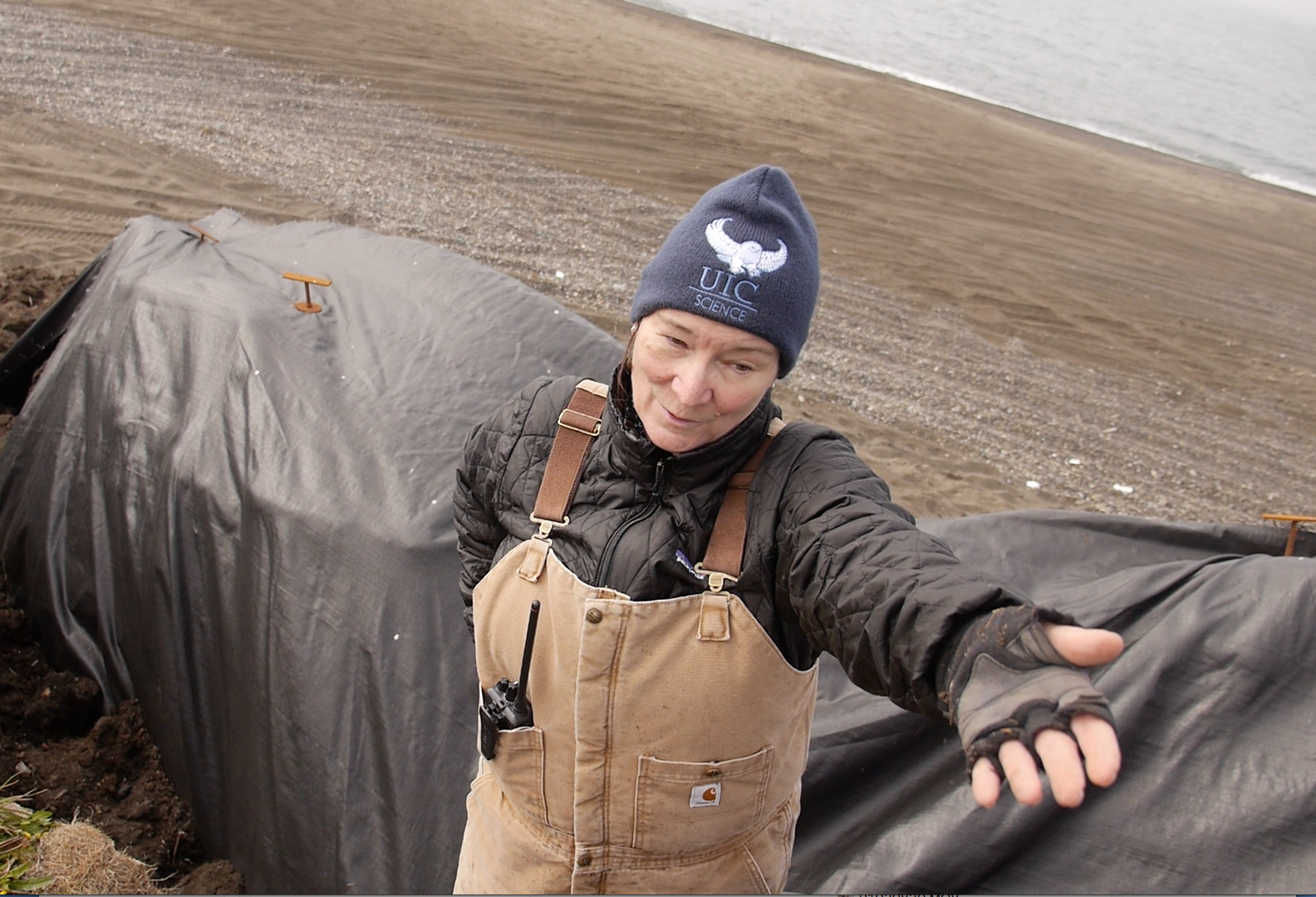Warm-up:
Consider and then discuss the following:
- What is an archaeologist?
- What do archaeologists do?
- Predict: How might climate change be affecting the work of archaeologists?
Look at the image and caption of the archaeologist profile in Eli Kintisch’s article “History is Melting: How Climate Change is Affecting Arctic Archaeological Sites”
- How would you describe the person in the photo? What do you think she’s doing?
- Discuss: What do you think will be the author’s purpose for this article? What do you think is the value in archaeological research?

Introducing the Resources:
Watch the Eli Kintisch’s “Meet the Journalist” to learn more about why Eli wrote this article as part of the larger project “Thawing Arctic Soils: A Tenuous Present and Dangerous Future”
Read the article and answer the questions attached.
Extension:
1. Read the following quotation from the article describing the challenges Jensen has faced in finding grants for her research:
“While Jensen’s efforts at Nuvuk fostered goodwill, the site also proved scientifically valuable. Archaeologists had written off the site as “contact era”—too young to yield important data. Jensen’s work, however, revealed arrowheads of an early culture known as Ipiutak that existed in Alaska until roughly 400 CE. “We were completely surprised,” says Jensen during an afternoon visit to the windswept, empty site. By luck, she’d dug deeper than previous archaeologists—they hadn’t had exposed human remains to clue them in—and warming permafrost had helped, too. She called a bulldozer in to carefully remove top layers, subsequently allowing volunteers to reveal buried wooden Ipiutak structures that had tantalizing detail. But when Jensen applied to the US National Science Foundation to mount a full excavation, her grant application was—like most applications on the first try—denied. “I didn’t bother reapplying because by the time we would have reapplied and gotten funded the land wasn’t going to be there,” she says, pointing at the waves. The soil containing the wooden structures is now tens of meters out to sea.”
Using examples from the article, write a letter to the U.S. National Science Foundation supporting Jensen’s research. Use examples from the article to structure your letter, but also be sure to articulate why you think this research is important.
The following lesson introduces students to journalist-grantee Eli Kintisch's project "Thawing Arctic Soils: A Tenuous Present and Dangerous Future". Students will discuss the role of archaeology and explore how climate change is affecting the work of archaeologists in the arctic. Students will also analyze the tone of the article and the impact of how Kintisch has structured the details of the article. Finally students will be asked to use details from the article to write a letter of support for archaeologist Anne Jensen's research.
CCSS.ELA-LITERACY.RI.11-12.1
Cite strong and thorough textual evidence to support analysis of what the text says explicitly as well as inferences drawn from the text, including determining where the text leaves matters uncertain.
CCSS.ELA-LITERACY.RI.11-12.3
Analyze a complex set of ideas or sequence of events and explain how specific individuals, ideas, or events interact and develop over the course of the text.
Note: This lesson is written to include activities and discussions that are facilitated by the teacher. However, the lesson can be adapted to ask students to explore articles independently.
You can get more information on Kintisch's project here.





